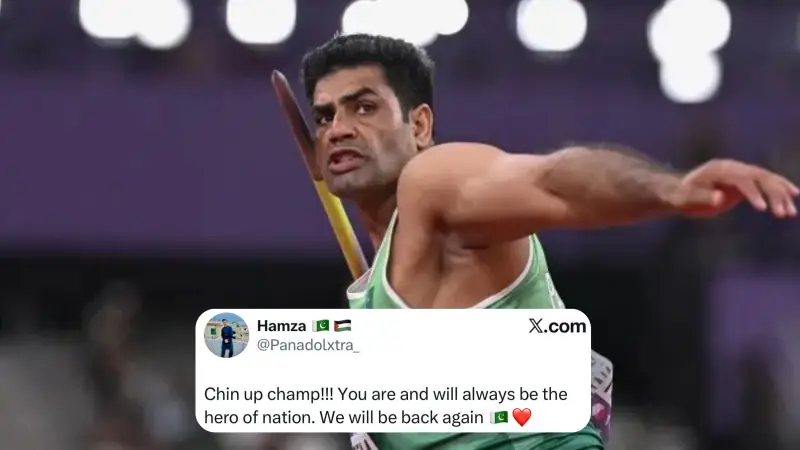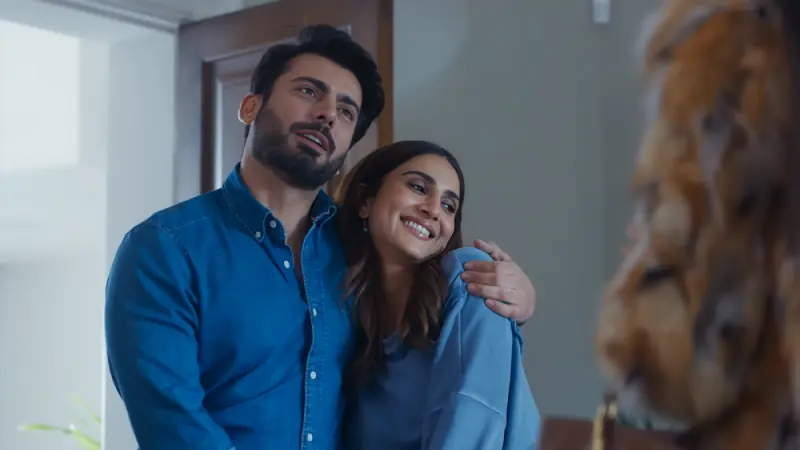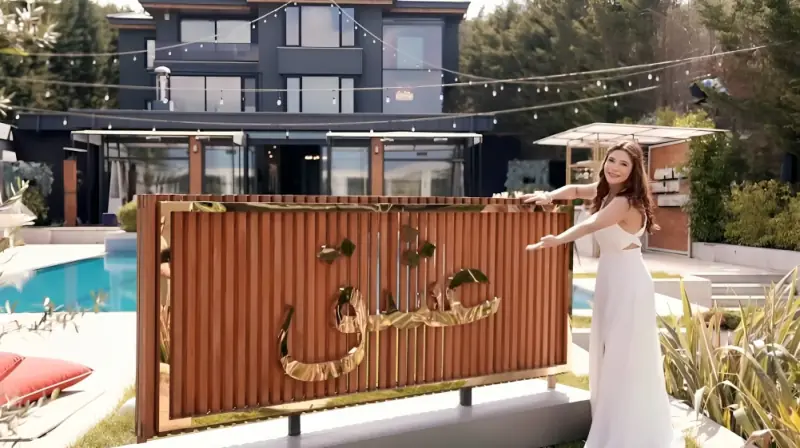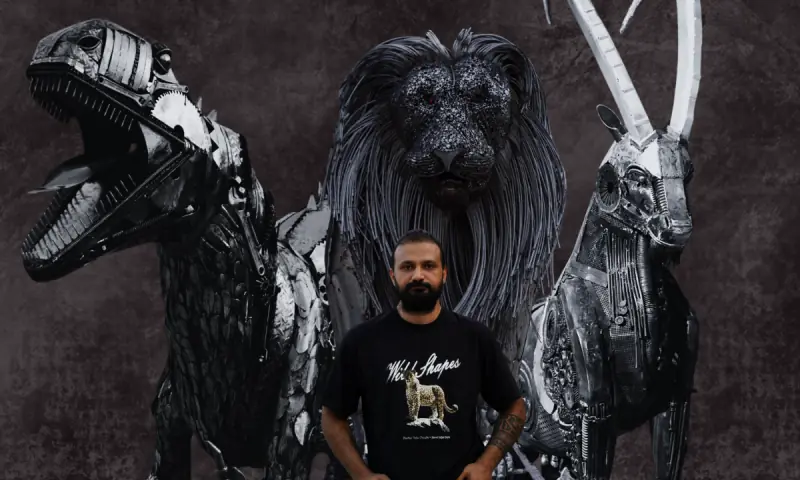Is the making of the Jinnah cap a dying trade?
Inside the labyrinth of Karachi’s Teen Hatti locality is a small, three-room house. An ordinary quarter on the outside, it houses an extraordinary man and his small family.
Mohammad Sultan is one of the two or three surviving artisans of the karakul — the cap worn by the Quaid-i-Azam and the one which came to be known as the Jinnah Cap. Sellers of Jinnah caps swear that he is the finest artisan of the surviving lot.
The traditional cap sellers are a miniscule, tightly-knit community in Karachi. A day earlier, the search for the finest karakul maker had begun in the old-city shopping district of Saddar. One seller directed me towards another cap-maker before apologetically adding that the man was less a maker and more a repairman. At the next shop, I hit gold.
“Sultan is the best in town but he lives at Teen Hatti,” says Altafur Rehman of Rehman Cap & Hat Company. This shop has existed since 1948, as a stall on the pavement along the road, before a building was raised in 1978 at the same location and street vendors were accommodated inside.
“It’s not an area for cars. You can go on a bike or walk.”
The directions were spot on. Everybody in the neighbourhood knew where Sultan Bhai lived and how to get to his place.
Sultan Bhai wasn’t home the first time. His daughter told us he’d be back in the evening and to return then.
It turns out that the best Jinnah cap-maker in the city is actually an office assistant working full-time at a school. The last surviving makers of this dying craft see their work as a labour of love. Earnings from weaving caps supplement family income but are never the primary source.
“My father lost his eyesight making caps,” narrates Sultan. “This trade is generational, even my great grandfather used to weave caps.”
The family hails from Delhi and Sultan says his ancestral family shop used to be at the famous Kashmir Gate. Sultan himself has never seen India — he was born in Karachi in 1961 — and much like the craft itself, family stories of making the karakul have been carried forward by tradition.
But it seems that the line will now end at Sultan.
He has no heirs to the trade nor does he intend to train his offspring.
“In the larger scheme of things, making Jinnah caps alone is not a recipe for survival,” he says. “I have lived the time when we’d be making 20 caps every day. But since I have gone part-time, that rate has slowed down. Now it depends on the orders I receive.”
The conversation shifts to the romance associated with the karakul: it denotes culture and identity but it equally symbolised a cultured upbringing.
“Do you know that Quaid-i-Azam never wore a cap that was made in Pakistan. His caps had all come with him from India.”
The Jinnah cap is indeed one of the most popular in the karakul family of caps but it also has rivals. The Liaquat (Ali Khan) Cap has also been in vogue as has the one worn by Maulana Kausar Niazi. While the Jinnah cap is a perfect oval, the Liaquat Cap is flattened at the bottom and looks similar to the Turkish cap, the Fez.

Then there were regional variations: Lakhnavi caps, for example, are made of cotton. There was the elevated top such as the one Maulana Mohammad Ali Jauhar wore which was a trendsetter in Punjab.
There also used to be a Quetta-style karakul but Sultan laments that it has gone extinct. “It was like a Jinnah cap but with a wall in the middle.”
Sultan learnt the trade from his father, Mohammad Salam. He was sent to school but he was never interested in studying. “I must have been 12 or 14 years old when I left school and started helping my father.”
Soon he graduated from helper to partner. “It was a two-man job at the time. If my father would cut the leather, then I’d sew. It was always teamwork.”
How did Salam Sahib react when his son made his first karakul?
“I never did, not once. Respect dictated that I didn’t complete the hat even if I had done most of the work. My father would do that. But then there was a fear of him too.”
Salam was known as a master craftsman. His son claims that he would be summoned to repair the Quaid-i-Azam’s original cap that is preserved in the museum. But by the time Sultan reached his prime, the landscape had shifted for karakul caps.
“There was a time when every government servant in the country would get a complementary, black-coloured Jinnah cap every Eid,” recalls Sultan. “That practice has largely stopped. Now the only places where they are needed is the Governor House, Chief Minister’s House and some military offices.”
The death knell for local artisans, however, proved to be the American invasion of Afghanistan after 9/11.
“Karakul is made from a particular kind of lamb wool that is only available in Afghanistan. That was our raw material,” he explains. “Then the Americans came and chanced upon the wool. They took it to make woollen coats. It takes 40 pieces to make one coat but it only takes one to make a karakul.”
Gradually karakul disappeared from the local market. Domestic demand was low to begin with and short supply of wool simply compounded matters. A traditional craft was at the risk of extinction.
Although cloth replaced wool, the difference in quality is stark for those with a passion of wearing the karakul.
“A woollen karakul should sell for around 8,000 rupees, not everyone can afford that,” says Sultan. “The younger generation just isn’t interested in karakul unless they have to wear it abroad. There they wear it with pride as a symbol of being Pakistani or Muslim.”
The veteran cap-maker explains that many cap selling businesses either shut down or the owners changed trades to survive. “There are two shops of note in Saddar to have survived, Rehman Sahib’s and Yamin Sahib’s. There used to be Allahwalla Cap House but it shut down. There was another at Denso Hall, they are now selling umbrellas.”
A day earlier, Altafur Rehman — a bearded man in his sixties — had explained that at the height of the karakul business, 300-400 caps would be sold every month. Today, selling 12 would be an achievement.
“You have to remember that back then, even in the early 1980s, there were foreigners lining the bazaars of Karachi,” says Altaf. “About 65 percent of the business was generated because tourists wanted the karakul. And about 70 percent of that demand was for Jinnah caps and Liaquat caps.”
“Till Quaid-i-Azam’s face is on our currency notes, Jinnah caps will continue to live.”
Much like Sultan’s family, the Rehman family’s involvement in selling caps spans generations. The fourth one is currently preparing to take over the reins.
“Do you know why the Jinnah cap became popular?” he asks.
“Because the Turkish cap that Sir Syed Ahmed Khan used to wear and the one that was part of the Aligarh college dress code, was manufactured by a Jewish company. When the Muslims collected under the Muslim League, they felt the need for caps that were made by Muslims.”
The Rehmans deal in all kinds of traditional headgear. In one corner of the shop are images of various luminaries of Islamic and subcontinental history, along with their stylistic preference of caps. Altaf laments much of tradition has been reduced to stage props or fleeting fads.
“This is a Bahadur Shah Zafar-styled hat,” says Altaf as he retrieves one from the shelf behind him. “It was ordered for a theatre production.”
Why the loss in value?
“Because there is no demand. There is no turnover in business and therefore even the artisans are dying out.”
And what of the older generation?
“It’s an expensive hobby if you are into it, we have sold Mufti Muneeb a karakul that was worth 25,000 rupees.”
Elsewhere, roadside cap vendor Shahi Karam has been selling 200-rupee Jinnah caps. The quality is poor but he argues the case of affordability.
“Till Quaid-i-Azam’s face is on our currency notes, Jinnah caps will continue to live.”
Back at Sultan’s house, however, the master craftsman is not too optimistic. “When there are no artisans, how can an art survive?”
Originally published in Dawn, EOS, August 13th, 2017













Comments